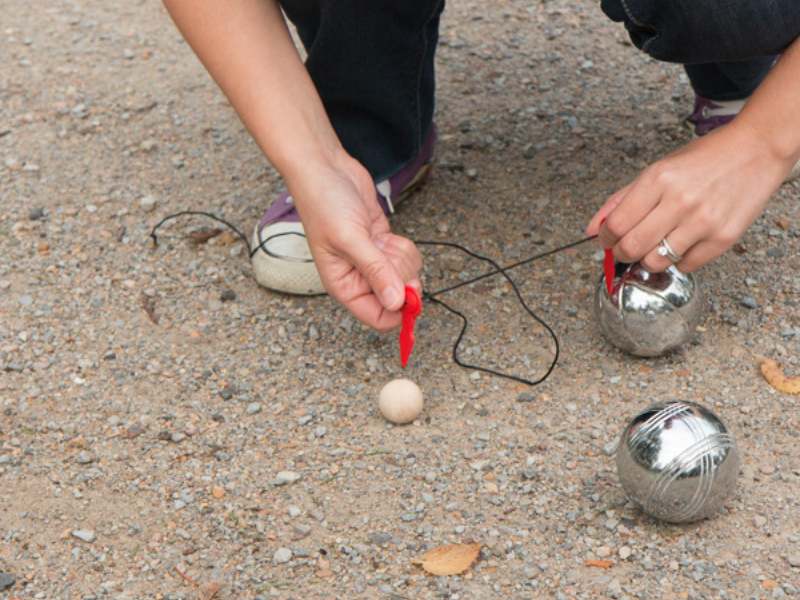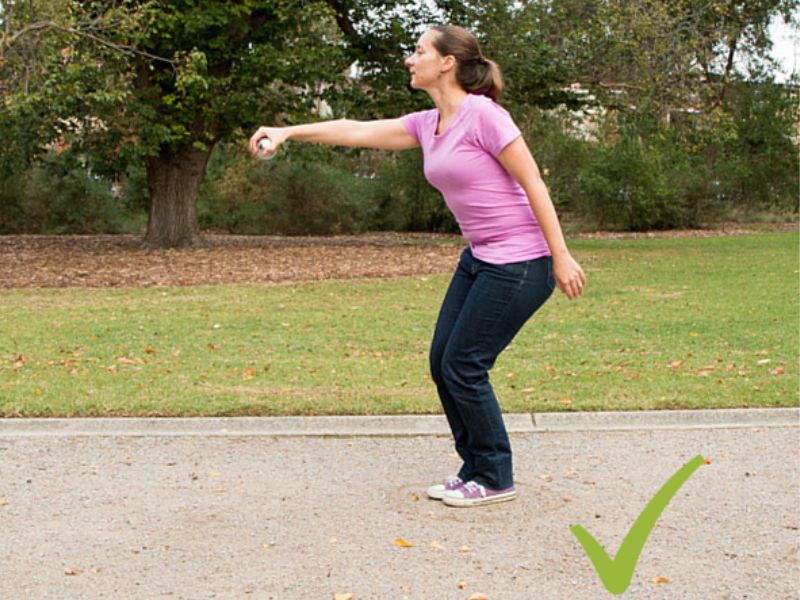THE GAME OF PÉTANQUE
JOIN US ON A SUNDAY AFTERNOON!
Pétanque is a century-old game originating from Provence, in the South of France. The name comes from “pieds tanqués,” which means “feet anchored/feet firmly grounded.” In an older version of the game, the ball was thrown after a 3-step run to accommodate one of the players who was suffering from rheumatism and couldn't run). The rule was changed, and all players now throw the ball with both feet firmly planted on the ground. Pétanque was born!
Une boule de pétanque = a pétanque ball
They are hollow and made of metal (usually carbon steel or stainless steel).
The boules have different patterns on them so we can know whose player they belong to (it’s also possible to have your initials carved on the boule).
- Le cochonnet / le bouchon / le petit / le but / le gari = the piglet, the jack (a small wooden ball)
The team score points for having their boule(s) the closest to the cochonnet. The cochonnet is therefore what you need to aim at when throwing your boule.
- Un bouliste, un joueur de pétanque = a pétanque player
In pétanque, two teams play against each other. The number of boules used for the game depends on the number of players in each team :

- Le terrain, le boulodrome = the area/field/ground on which pétanque is played.
Pétanque is best played on small gravel, but can also be played on sand or grass (my least favourite, because then the balls can’t really roll).
It is forbidden to touch or remove any obstacle on the terrain (a pebble, a leaf, a twig, etc). However, it is allowed to fill back an impact hole which has been made by one boule thrown before.
- Une mène = a round, an end
A round ends when both teams have played all of their boules. Pétanque is played in as many rounds needed for the first team to score a total of 13 points.

Rules of Pétanque
At the very start of the game, for the first round (“la premiere mène”), we randomly draw which team goes first.
1. The starting team draws a small circle on the floor. (There are also small prefabricated plastic or metal circles that can be bought and used. But usually, tracing a circle with your foot or a stick in the dusty ground works just fine!)Every player will then have to throw their boules from the circle during that round (in other words, this will be the starting point for all players).
2. The first player throws le cochonnet, which must land anywhere between 6 meters and 10 meters from the starting circle (otherwise it’s too easy / too hard and you need to throw the cochonnet again.)
3. A player from the opposing team throws their first boule, as close to the cochonnet as possible (since that is how you win the game!)
Remember the rule for throwing your boules when playing pétanque:
Both feet need to be within the circle and on the ground. (Therefore, there is no running before throwing the boule!).
4. The opposing team also throws one boule. This way, we can see who is “having the point”, i.e which team is leading thanks to having their boule closest to the cochonnet.
Sometimes, the boules can look at equal distance from the cochonnet and it can be really tricky to tell which team gets the point. We therefore use a meter, a piece of string or a compass to measure and find out. (In the official rules of petanque, using your feet to measure is forbidden, but many people do it anyway when playing informally.)
5. The team who does not have the point throws the next boule and continues to do so until they gain the point or run out of boules.
The players within one team can play in any order, depending on whether they require the skills of one of their “pointeurs” or “tireurs”!
- Pointer = to point (to throw the boule so that it gets as close to the jack as possible)
- Un pointeur = a pétanque players whose task is to point / to aim at the jack.
- Tirer = to knock away an opponent’s boule – a good way to get rid of the boules of the opposing team that are close to the cochonnet! By the way, if the cochonnet is moved/knocked away by a ball, the game still goes on (but it’s not very ethical to do so deliberately!)
- Un tireur = a pétanque player who is skilled at knocking away the opponent’s boules.
6. At the end of an end, the team with the boule closest to the cochonnet scores one point for each of its boules that is closer than the opposing team’s closest boule.
TO LEARN MORE ABOUT THE RULES AND SCORING OF PÉTANQUE


